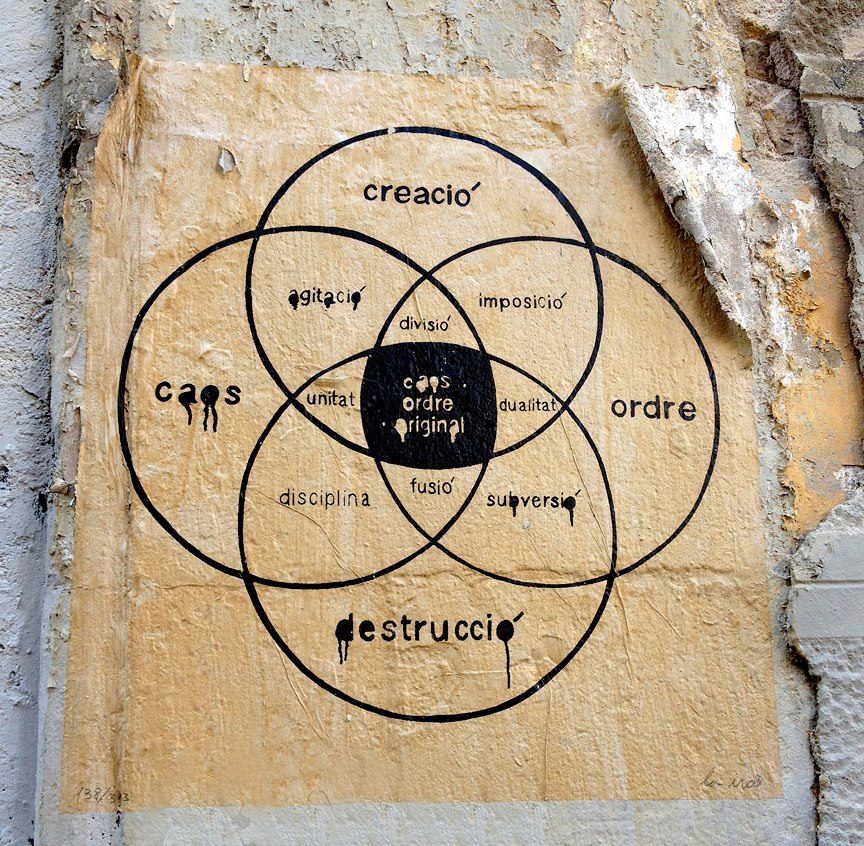
When I started making beads in the torch, I tried to make them small like all the commercial beads I'd ever bought. Soon, of course, the thrill of creation took over and the beads got bigger. My friends would look at them and say, "But they're so big!" (Doesn't sound like a compliment, does it?)
The lampworking community LOVES big beads. As in other art forms, sometimes bigger can be just darned impressive. It takes skill and confidence to handle that much glass. For those who don't work glass, just remember that molten glass is about the consistency of honey. How do you keep honey on a bicycle spoke? Spin, spin, spin! As the bead gets bigger, the job of keeping the hot glass on the mandrel requires increasing strength and skill to rotate and balance. I wear a leather apron on days with limited dexterity (and I've been thankful!).
Then there is TOO big. You know a bead is too big when none of your tools are large enough to do the job.
When I cut the latest batch of flat tiles, I misremembered the length. Cut to 2.5", I had plenty of room to get carried away with my tiny paintings. When I went to make the base beads in the torch, the first hint of trouble was that I almost ran out of room on my bead release. That's easy to fix -- just dip them deeper.
The second hint of trouble was when I picked up the adored Jim Moore cushion press (expensive, but totally worth it!) and squashed the bead flat. Oops, I only pressed 2" flat; there was a big bulge on one end. So these beads have taken even more time than usual, because I've had to fuss and smooth and try to come up with a different approach to handle them.
One such attempt was to build the base and squash it flat first when there's less glass to deal with, then wrap the tile. That worked, but there were more issues of bubbles than wrapping before squashing.
My favorite tile, held until last, suffered the most from bubbles. Sometimes I can selectively heat a trapped bubble and get it to rise through the tile and burst, then smooth over the hole so that the place is undetectable. If the bubble wants to come up through the enamel painting (common, because most of the bubbles come from some slight roughness on the painting) then the bead is doomed.
Such was the case with the favorite tile, where the poor hummer blurred. I didn't continue until it popped, because it was clearly ruined.
Even the butterfly on the back got a big bubble! This one I did pop and you can see where part of the image just disappeared, with messy black edges. 
Here's the way it works. A super thin, flat area of air gets trapped under the glass, with nowhere to escape. As the bead is heated and the glass flows, the air moves into a spherical bubble. A bubble looks fine if it's all by itself. When under the enamel, all that flowing causes the enamel to blur, distort, discolor, and burn. But leaving it isn't an option either, because light refracts weirdly at the air pocket, making it very visible. So the answer is: don't trap air in the first place! Go slowly!
So much for saving the best until last!
skip to main |
skip to sidebar

Contact Form
Newsletter Signup

- Vickie Hallmark
- Artist, scientist, and gardener...I fabricate contemporary jewelry inspired by the flora and fauna outside my studio windows.
Favorite Blogs -- Metal
-
-
-
-
-
Compatibility of Hadar’s Metal Clays6 years ago
-
-
-
-
-
-
-
-
Not really bloggin' but I am Instagrammin'10 years ago
-
-
-
The Big Move11 years ago
-
-
Favorite Blogs -- Glass
Favorite Blogs -- Fiber
Favorite Blogs -- Inspiration
Search This Blog
Categories
- Argentium + metal clay (15)
- beads (141)
- bells (1)
- bird (12)
- Bird a Week (20)
- bird hournal (1)
- bird journal (45)
- birdhouse (9)
- birds (101)
- blog carnival (5)
- blog/website (11)
- books (3)
- bracelet (4)
- bronze clay (34)
- brooch (2)
- brooches (4)
- cactus (6)
- class (10)
- components (3)
- conference (4)
- copper clay (2)
- custom jewelry (1)
- designing jewelry (15)
- drawings (38)
- earrings (35)
- electroforming (49)
- enamel (46)
- exhibitions (18)
- fauna (10)
- faux bone (4)
- fiber (1)
- flora (8)
- four a month (3)
- galleries (6)
- garden (4)
- glass (78)
- gold (1)
- inspiration (54)
- jewelry (17)
- jewelry school (12)
- journal (7)
- kiln (1)
- kitchen (15)
- labels (1)
- leaf collection (1)
- leaves (1)
- marketing (2)
- Master Muses (15)
- metal clay (83)
- motivation (2)
- painting (2)
- paintings (24)
- patina (1)
- photographs (16)
- planets (3)
- pods (8)
- publications (36)
- quilts (22)
- resin (4)
- Ring a Week (11)
- rings (11)
- routine (1)
- shop (1)
- show reviews (3)
- silver clay (56)
- sketches (1)
- sterling clay (23)
- stock tank pond (1)
- stones (2)
- studio (14)
- tibial plateau fracture (10)
- tools (1)
- trade shows (1)
- travel (18)
- treeto (1)
- treetop (4)
- trends (1)
- tricks & tips (1)
- tutorial (1)
- vessels (15)
- wholesale (2)
- workshop (26)





















